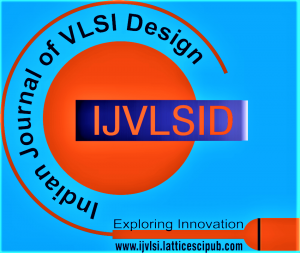
#Vlsi design book by bakshi pdf free download manual
Following in the footsteps of the successful Reuse Methodology Manual (RMM), authors from ARM and Synopsys have written this Low Power Methodology Manual (LPMM) to describe low-power methodology with a practical, step-by-step approach." Richard Goering, Software Editor, EE Times "Excellent compendium of low-power techniques and guidelines with balanced content spanning theory and practical implementation. "Tools alone aren't enough to reduce dynamic and leakage power in complex chip designs - a well-planned methodology is needed. The second section deals with transparent electronic devices including thin-film transistors, photovoltaic cells, integrated electronic circuits, displays, sensors, solar cells, and electro-optic devices.ĭescribing scientific fundamentals and recent breakthroughs such as the first "invisible" transistor, Transparent Electronics: From Synthesis to Applications brings together world renowned experts from both academia, national laboratories, and industry. The first section is devoted to fundamental materials compositions and their properties, including transparent conducting oxides, transparent oxide semiconductors, p-type wide-band-gap semiconductors, and single-wall carbon nanotubes. Structured to strike a balance between introductory and advanced topics, this monograph juxtaposes fundamental science and technology / application issues, and essential materials characteristics versus device architecture and practical applications. This requires a special class of materials having "contra-indicated properties" because from the band structure point of view, the combination of transparency and conductivity is contradictory. The challenge for producing "invisible" electronic circuitry and opto-electronic devices is that the transistor materials must be transparent to visible light yet have good carrier mobilities. The performance of FAM is comparable with other reported results, but with the added advantage of on-line and incremental learning. In addition to off-line learning, we evaluate the prospect of using FAM as an autonomously learning pattern classification system for on-line, non-stationary environments. We then examine a voting strategy to improve classification accuracy by combining results from multiple FAM classifiers. First, we identify the 'optimum' parameter settings of FAM for the problem at hand, and investigate the effects of different training schemes and learning rules on classification results, using an off-line learning methodology. A number of simulations have been conducted systematically to evaluate the applicability and usefulness of FAM in this context. A benchmark database of radar signals from ionosphere has been employed for the system to classify arbitrary sequences of pattern into distinct categories.

This paper describes an experimental study of the Fuzzy ARTMAP (FAM) neural network as an autonomous learning system for pattern classification tasks. Furthermore, design methodologies are proposed to efficiently analyze and reduce noise coupling in 3-D systems. The effects of through silicon vias (TSVs) on noise propagation are also discussed. Contrary to the general assumption, 3-D systems are shown to be highly susceptible to substrate noise coupling.

Various noise coupling paths in a heterogeneous 3-D system are investigated in this paper. Alternatively, interplane noise coupling emerges as a fundamental limitation in these highly heterogeneous 3-D systems. Since typical applications in life sciences consume significantly less energy, the thermal constraints are relatively alleviated. Alternatively, the application of 3-D integration to life sciences has not yet received much attention.

The application of 3-D integration to high perfor-mance processors, however, is limited by the thermal constraints since transferring the heat within a monolithic 3-D system is a challenging task.

One of the important advantages of the 3-D technology is the capability to stack memory on top of the processor cores, significantly increasing the memory bandwidth. Three-dimensional (3-D) integration technology is an emerging candidate to alleviate the interconnect bottleneck by utilizing the third dimension.


 0 kommentar(er)
0 kommentar(er)
